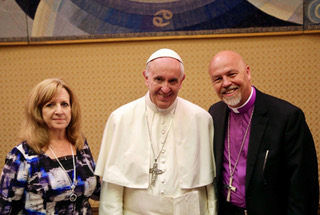In our time, we struggle with paradoxes. Many of our feasts fall flat because there has not been a previous fast. In times past, there was generally a long fast leading up to a feast, and then a joyous celebration afterward. Today, we have reversed that: there is a long celebration leading up to the feast and a fast afterwards.
Take Christmas, for example. The season of Advent, in effect, kicks off the Christmas celebrations. The parties start, the decorations and lights go up, and the Christmas music begins to play. When Christmas finally arrives, we are already saturated and satiated with the delights of the season— we’re ready to move on. By Christmas Day, we are ready to go back to ordinary life. The Christmas season used to last until February. Now, realistically, it is over on December 25.
Celebration survives on contradiction. To feast, we must first fast. To come to real consummation, we must first live in longing. To taste specialness, we must first have a sense of what is ordinary.
Lent.
We know it is a season within which we are meant to fast, to intensify our longing, and to raise our spiritual temperatures, all through the crucible of non-fulfillment. But how do we understand Lent?
Lent is derived from an Old English word meaning springtime. In Latin, lente means slowly.
Therefore, Lent points to the coming of spring, and it invites us to slow down our lives so as to be able to take stock of ourselves. While that captures some of the traditional meaning of Lent, the popular mindset generally has a different focus, looking at Lent mostly as a season within which we are asked to refrain from certain normal, healthy pleasures so as to better ready ourselves for the feast of Easter.
To further our understanding, perhaps the foremost image for this is the biblical idea of the desert. Jesus, we are told, in order to prepare for his public ministry, went voluntarily into the desert for forty days and forty nights, during which time he took no food, and, as the Gospel of Mark tells us, was put to the test by Satan, was with the wild animals, and was looked after by the angels.
For us, Satan and wild animals refer particularly to the chaos inside of us that normally we either deny or simply refuse to face: our paranoia, our anger, our jealousies, our distance from others, our fantasies, our grandiosity, our addictions, our unresolved hurts, our sexual complexity, our incapacity to really pray, our faith doubts, and our dark secrets.
The normal “food” that we eat (distractions, busyness, entertainment, ordinary life) works to shield us from the deeper chaos that lurks beneath the surface of our lives. Lent invites us to stop eating, so to speak, whatever protects us from having to face the desert that is inside of us. It invites us to feel our smallness, to feel our vulnerability, to feel our fears, and to open ourselves to the chaos of the desert so that we can finally give the angels a chance to feed us.
That is a rich biblical image for Lent….


